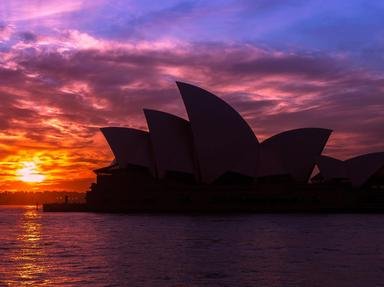Quiz Answer Key and Fun Facts
1. The aboriginal people were the first to arrive in what is now called Australia. When did they first arrive?
2. There is no doubt that explorers from other lands discovered the Australian land mass before Captain Cook claimed the east coast of the continent for Great Britain. How many years were there between Cook's 'discovery' and the arrival of the First Fleet for settlement purposes?
3. While Great Britain established several penal colonies in the new land, not all that were to become the six state capitals had a penal colony. Which one(s) did NOT?
4. In the 1851 the population of the Australian colonies was 438,000. A decade later the population had more than doubled to 1.15 million. What occurred to prompt such a population growth?
5. One of the reasons the six Australian colonies united under Federation to become the Commonwealth of Australia in 1901 was to have a common immigration policy. One of the first pieces of legislation passed by the young Australian government was the Immigration Restriction Act. This was better known as what?
6. John Curtin was elected Prime Minister in 1941 said "This country shall remain forever the home of the descendants of those people who came here in peace in order to establish in the South Seas an outpost of the British race". However, something happened to change Mr Curtin's mind. What happened?
7. Australia, after WWII, implemented massive immigration programmes but the numbers coming from the UK were not enough. Which non-British group comprised the largest nationalities going to Australia between 1946-1970?
8. During the 70s the Australian immigration picture changed. What happened?
9. During the late 90s the Australian immigration picture changed once again. What happened?
10. In 2010 Australia's population had reached 22 million people. How many people had emigrated to Australia between the end of WWII and 2010?
Source: Author
1nn1
This quiz was reviewed by FunTrivia editor
bloomsby before going online.
Any errors found in FunTrivia content are routinely corrected through our feedback system.
